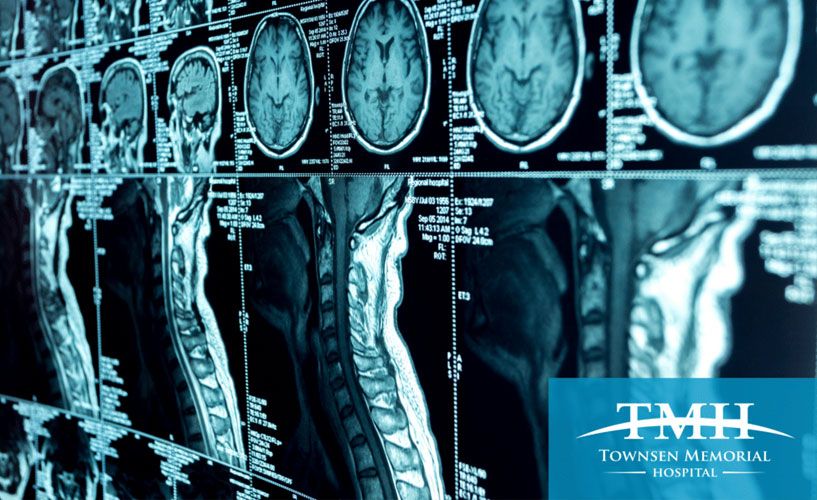What Are The Types Of Imaging Tests?

Have You Ever Wondered Why There Are Different Types Of Imaging Tests?
If your doctor has ordered a medical imaging exam for you, you might have questions about the type of scan or test you will be receiving.
There are many ways doctors use imaging to diagnose or monitor a medical condition. Different types of imaging are used for different conditions and depend on your symptoms. Imaging scans are safe and carry minimal risks, but at Townsen Memorial we want you to know what to expect so that you feel prepared and comfortable.
Types Of Imaging
An X-Ray is the most widely used medical imaging technique for bone structures since their discovery. The technique shows bone breaks, fractures, arthritis, osteoporosis, and more allowing the medical staff to determine an accurate treatment plan. X-Rays are quick and painless, usually only taking 10 to 15 minutes to complete.
A CT Scan (Computed Tomography Scan) uses computer-processed combinations of differently angled X-Ray measurements to see the inside of an organ without cutting into it. They allow the medical team to take a more specialized look at the problem area. CT scans are used to detect tumors, bone trauma, heart disease, and even internal lung problems. During a CT Scan, you lie on a table that slides into an x-ray tube. The tube rotates around to take the images. This process usually only takes 10 to 15 minutes.
MRIs use magnetic fields and radio waves to create detailed images of organs and tissues in the body. An MRI is used to diagnose internal problems, as well as a follow-up from medical procedures without exposing the patient to the radiation of an X-ray. They are used to diagnose neurological cancers, central nervous system disorders, spinal problems, and much more. During an MRI, you lie on a table that slides into the MRI machine. This process usually takes 45 minutes to an hour to complete.
An Ultrasound uses high-frequency sound waves to produce images of organs and structures within the body. An ultrasound is typically used during pregnancy but is also used to diagnose gallbladder disease, breast lumps, joint inflammation, and much more. During this process, a technician applies a gel to your skin, then glides a transducer over the area to be scanned, capturing the images inside your body. A ultrasound is completely painless and usually only lasts 30 minutes to an hour.
An Electromyography (EMG) measures muscle response or electrical activity in response to a nerve’s stimulation of the muscle. This test is used to reveal nerve dysfunction, muscle dysfunction, or even problems with nerve-to-muscle signal transmission. During this process, needles (called electrodes) are inserted through the skin into the muscle. The needle records the electrical activity in that muscle and translates these signals into graphs, sounds, or numerical values that are interpreted by a specialist.
A related procedure is the Nerve Conduction Velocity (NCV). This procedure measures the speed of conduction of an electrical impulse through a nerve. An NCV can determine if a nerve is damaged and is often performed at the same time as an EMG. During this process, electrode patches are attached to the skin and the nerve is stimulated.
Contact Us
Medical imaging is a useful tool for doctors to detect and diagnose certain conditions and illnesses. At Townsen Memorial, we offer a wide variety of services, including imaging tests, operated by a skilled medical staff to provide patients with the best in imaging care. We offer imaging in various locations. Our main hospital location is located in Humble, TX off of FM 1960 and Highway 59. We also have 2 imaging center locations. Townsen Memorial Imaging Center- Med Center is located at 3003 S. Loop W. Suite 140 in Houston, Texas. Townsen Memorial Imaging Center- Spring is located at 3301 Spring Stuebner Rd., Suite 120 in Spring, Texas. If you have any questions visit our website or call 1-877-494-9487.